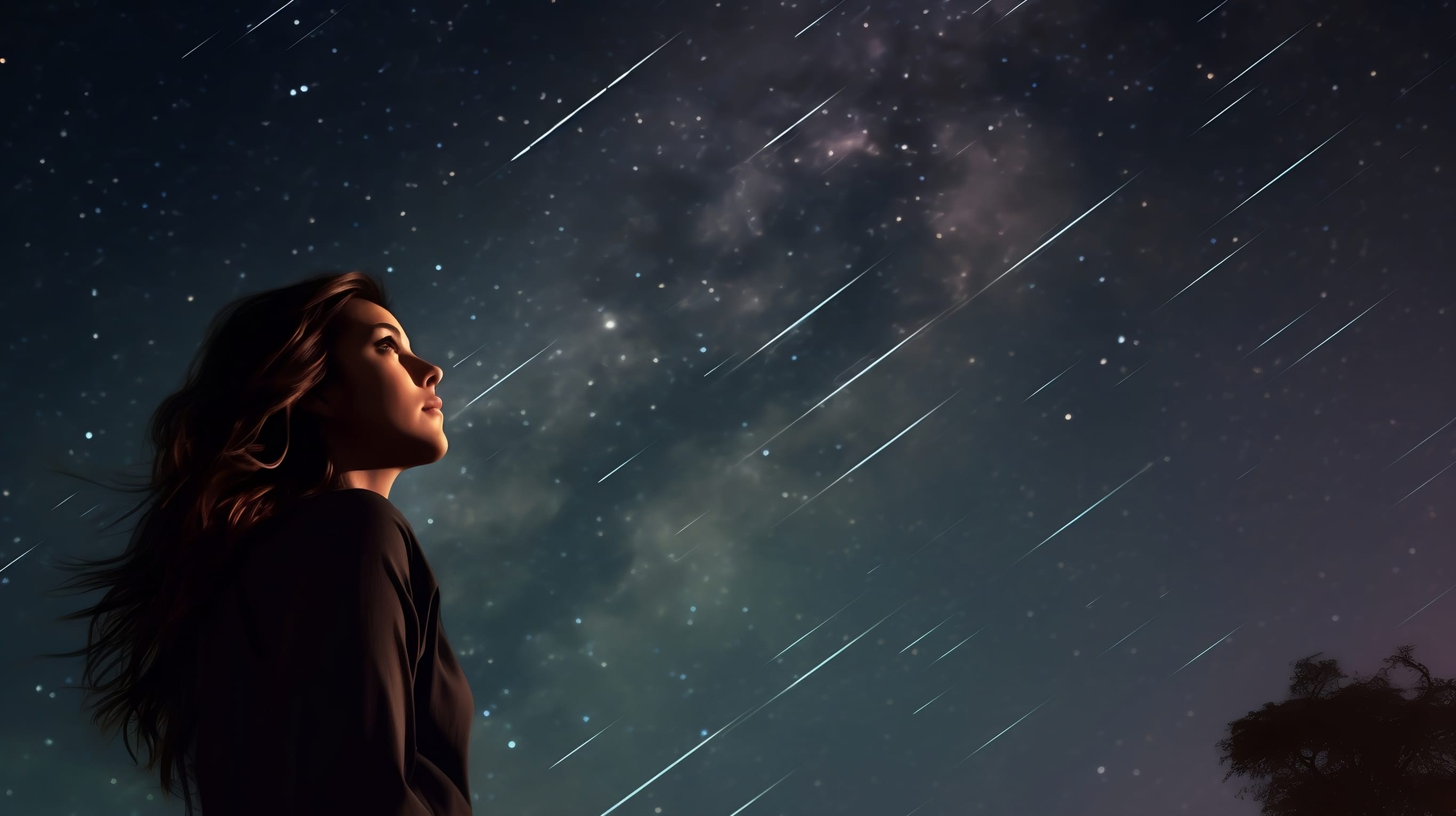Kappa Cygnids 2026: Don’t Miss Summer’s Final Shooting Stars
After the Perseids steal the show each August, another, lesser-known meteor shower quietly graces the night sky — the Kappa Cygnids. Though modest in numbers, the Kappa-Cygnids are famous for producing bright, slow-moving fireballs that can surprise even seasoned stargazers. With good viewing conditions expected this year, it's a perfect excuse to spend a quiet summer night under the stars. Use the Sky Tonight app to plan your viewing — and read on to learn when and where to watch, what to expect, and why this subtle summer shower is worth your attention.
Contents
- Kappa Cygnids 2026: When and where to see
- What is the Kappa Cygnid meteor shower?
- Kappa Cygnid meteor shower 2026: Bottom line
Kappa Cygnids 2026: When and where to see
- Active: August 3 – 28
- Peak of activity: August 17
- Meteors/hour: 3
- Moon illumination: 27%
- Radiant location: Cygnus
- Parent body: Uncertain
- Best visible from: Northern Hemisphere
- Description: The Kappa Cygnids (κ-Cygnids) are a small meteor shower with low rates, but slow, sometimes bright meteors. Their radiant region is complex, spreading into Draco and Lyra, so meteors may appear from a broader patch of sky than a single point.
Kappa Cygnids 2026: Visibility forecast
In 2026, viewing conditions for the Kappa Cygnids will be favorable. The shower will peak under a waxing crescent Moon, which will set early in the evening, leaving the rest of the night dark for relaxed, uninterrupted meteor watching.
Where can I see the Kappa Cygnids?

The radiant of the Kappa Cygnids (a point from which meteors appear to fly out) is located near the star Kappa Cygni in the constellation Cygnus. The radiant is well-positioned in the Northern Hemisphere — it remains above the horizon all night, giving stargazers plenty of time to catch shooting stars. In the Southern Hemisphere, however, the radiant stays low in the sky or may not rise at all, reducing the chances of seeing the meteors from southern locations.
The main thing you need to know: the higher the radiant is in the sky, the more meteors you are likely to see. However, you don’t need to look directly at the radiant — the shooting stars will be visible across the entire sky, and often appear with longer trails when they are further from the radiant.
To locate the radiant and learn how high it is, use the Sky Tonight app: just search for “Kappa Cygnids” and tap the target icon next to the result to locate the radiant easily in the sky.
How many meteors to expect
On the night of the peak, you might see up to 3 meteors per hour under dark-sky conditions. That may not sound like much, but the Kappa Cygnids are known for occasionally producing bright and slow-moving fireballs, which are spectacular when they do appear.
Also, the Kappa Cygnids experience outbursts of activity every 6–7 years, with the last such events recorded in 2021. Unfortunately, according to astronomers, no enhanced rates of meteor activity are expected in 2026.
Want to know about the most promising meteor showers of the year? Read our guide.
Observing tips
Here are some tips to help you make the most of the Kappa Cygnids peak:
-
Get away from city lights. A dark, unobstructed view of the night sky is essential.
-
Look anywhere in the sky. Although the meteors appear to originate near the constellation Cygnus, they can flash across any part of the sky.
-
Be patient. With only a few meteors expected per hour, it's crucial to settle in for at least an hour.
-
Allow your eyes to adjust. It takes about 20 minutes for your vision to fully adapt to darkness. Avoid looking at your phone; if you need to consult a stargazing app, turn on the Night Mode that will preserve your night vision.
-
Dress warmly. Even in August, nighttime temperatures can dip. Bring a chair, blanket, or sleeping bag, and perhaps a warm drink to stay cozy.
For more tips, check out our special guide. And if you want to test your meteor-watching skills, try our fun quiz!

What is the Kappa Cygnid meteor shower?
The Kappa Cygnids (κ-Cygnids) are a meteor shower with no known parent body, making them particularly interesting to astronomers. One candidate for the parent body is the asteroid 2008 ED69, but it hasn’t been confirmed yet. Certain studies also suggest that the shower’s radiant is unusually complex: it extends over a region of about 10 degrees, spanning over three constellations — Cygnus, Draco, and Lyra.
The Kappa Cygnids were first discovered by the Hungarian astronomer Miklós Konkoly-Thege in 1874. However, his main target was the Perseids, so when he noticed a few meteors of some unknown origin, he didn’t pay much attention to them. In subsequent decades, sporadic observations of the Kappa Cygnids continued, but their meteors were often attributed to other showers or dismissed as random meteors. Only in the second half of the 20th century did astronomers finally identify the Kappa-Cygnids as a distinct meteor shower.
Kappa Cygnid meteor shower 2026: Bottom line
In 2026, the Kappa Cygnids (κ-Cygnids) reach their peak on August 17 under favorable conditions — the waxing Moon will set in the evening and won’t interfere with your observations. Use the Sky Tonight app to determine the best time for observation — when the radiant is high, and the Moon has already set. If you live in the Northern Hemisphere, definitely give the Kappa Cygnids a chance this year! And to prepare for a successful meteor hunt, check out our colorful infographic on shooting stars.

